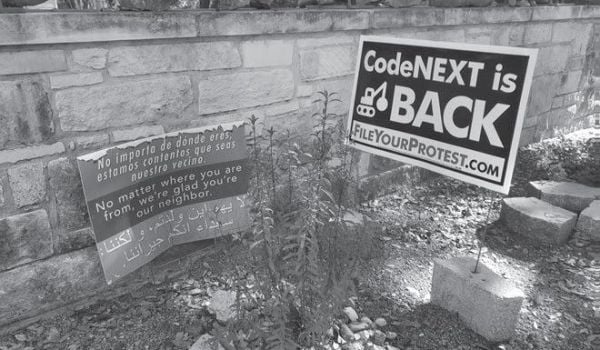Twenty years after the last revamp of Charlotte, N.C.‘s zoning ordinance — a politically fractious episode — the city planning department is preparing to study whether, and how, to update it once more.
Unlike the years-long, contentious process that resulted in the 1992 zoning ordinance rewrite, this time the process will be less extensive, said Charlotte Planning Director Debra Campbell. “What I don’t see is a wholesale rewrite of the zoning ordinance,” she said. “Whatever we do it, will be done incrementally.”
The city is looking for a consultant who will look through the city’s adopted policies and offer recommendations for what types of new codes the city needs.
The city’s plans and its ordinance sometimes don’t match, Campbell said. “We’ve had communities that have spent a lot of time thinking about who and what they want to be when they grow up, which is 20-30 years from now.” And they find “there’s a huge cavern of disconnect,” between their visions and the ordinance, which can sometimes make it difficult to implement plans and policies.
One reason for the disconnect is that, unlike some municipalities, Charlotte’s plans are only policy: They offer the city’s vision and are treated as guidelines. The zoning ordinance, by contrast, holds the legal requirements for development, setting out myriad detailed instructions such as setbacks from the street, how much parking is required, lot sizes, etc. A developer is required to follow the ordinances, but isn’t required to follow the plans.
Although the 1992 zoning revamp made many changes, and others have been added in the past 20 years, the ordinance still contains some provisions dating as far back as the 1950s. That was an era when widely separating houses, apartments, stores and workplaces was considered the latest and best land use practice. Today planners in many areas want to see more varied uses much closer together, sometimes even in the same building, to encourage less wasted land and to make transit, walking and bicycling more attractive.
Some U.S. cities, such as Denver and Miami, have adopted form-based codes, which worry less about separating uses and instead regulate the size, shape and relationships of buildings to one another and to streets, parks and other public places. One underlying philosophy is that it’s OK for a building’s use to change — for example, from home to office or store — as long as the building “behaves well” in the context of its neighborhood. Charlotte examples might be old textile mills that convert into residences or offices. The uses change dramatically but the building itself remains the same.
Campbell said the city should definitely consider the possibility of a form-based code but to be wary of fads that might not suit Charlotte. “What I don’t want is for Charlotte to just follow a trend because it’s the buzzword in the planning field,” she said. “I want us to look at whatever innovative regulatory tools are out there.”
One reason not to completely revamp the city’s zoning ordinance, she said, is that it would take years: “A text amendment to the zoning ordinance, even a simple one, takes us anywhere from six months to a year.”
The 1992 revamp took more than six years. “It was a very contentious process,” recalled former Charlotte-Mecklenburg Planning Commission chair Tim Mead, a retired UNC Charlotte political science professor. “At one of the very first meetings I went to, we received — it must have been a 600-page document — from a consultant. And I read the whole damn thing.”
The process took all of his six years on the commission, which is an appointed body that makes recommendations to the Charlotte City Council and the Mecklenburg Board of County Commissioners. After that consultant’s report was issued, he said, “opposition arose in the development community, and so we scuttled it.” A stakeholder group was formed.
“We started from line 1. We went through the thing a line at a time…By the time we finished that, I knew more about zoning than I thought any reasonable person ought to know.”
The commission adopted it and sent it to elected officials at one of Mead’s last meetings. What took so long? “There were people in the development community who believed that they had not been appropriately consulted,” he said, “and so they decided to stop it in its tracks.”







_600_350_80_s_c1.jpg)








